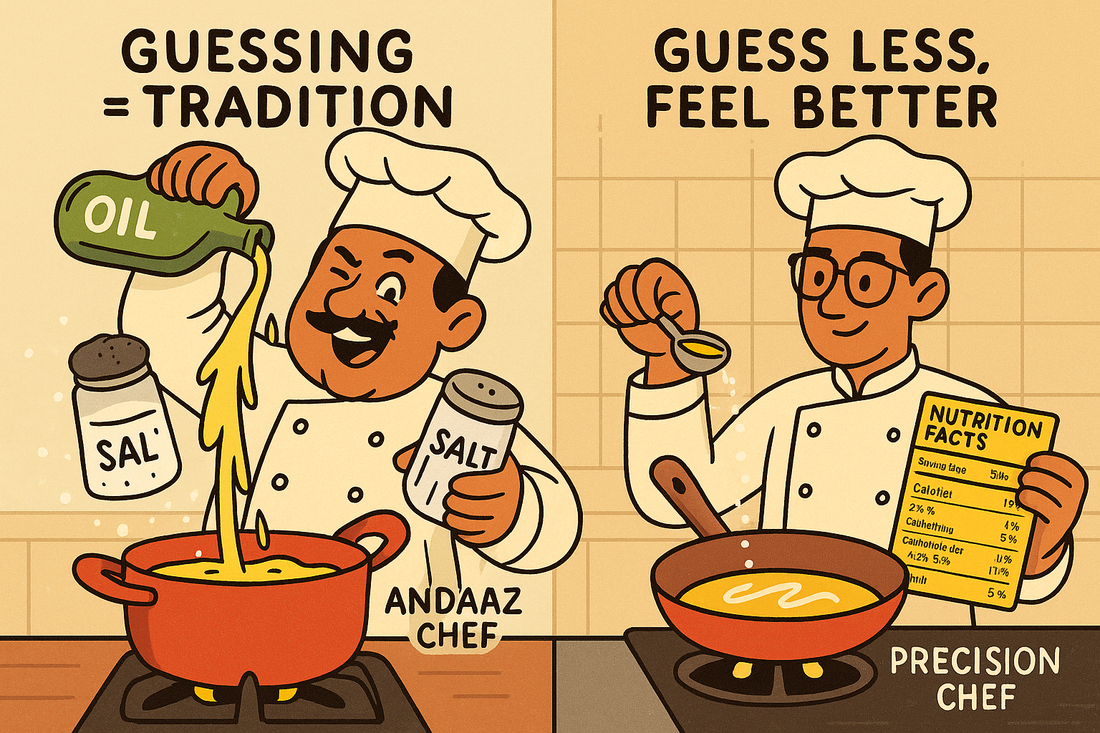
Home-Cooked Automatically Means Healthy
Share
The Myth: "If I cook at home, it's automatically healthy. Home food = good food."
The Reality Check: Homemade doesn't come with a magical health certificate.
Here's what most home meals actually look like: rice, roti, potato-based dishes—basically a carb festival with vegetables as decoration. Add poor awareness around oil and salt usage, plus cooking habits passed down from parents who prioritized taste over nutrition balance.
Why "Homemade" Can Still Miss the Mark:
- Most meals are heavily carb-focused
- Protein gets relegated to tiny dal portions
- Oil and salt quantities are pure guesswork ("andaaz se")
- Traditional recipes weren't designed for sedentary lifestyles
A meal of rice, sabzi, and papad might be nostalgic and filling, but it can still spike blood sugar, lack satiety, and leave you nutrient-deficient.
What Actually Makes Food Healthy:
- Balanced composition: protein, fiber, healthy fats in every meal
- Measured ingredients: knowing your oil and salt quantities
- Nutritional awareness: understanding what your body actually needs
Struggling with post-meal hunger? Read: Why You're Always Hungry (Even After a Full Meal)
The Upgrade: Focus on meal design, not just cooking location. Make sure every plate has adequate protein, 7-10g fiber, and controlled sodium.
Bottom Line: Smart cooking beats home cooking. Location doesn't determine nutrition—composition does.
